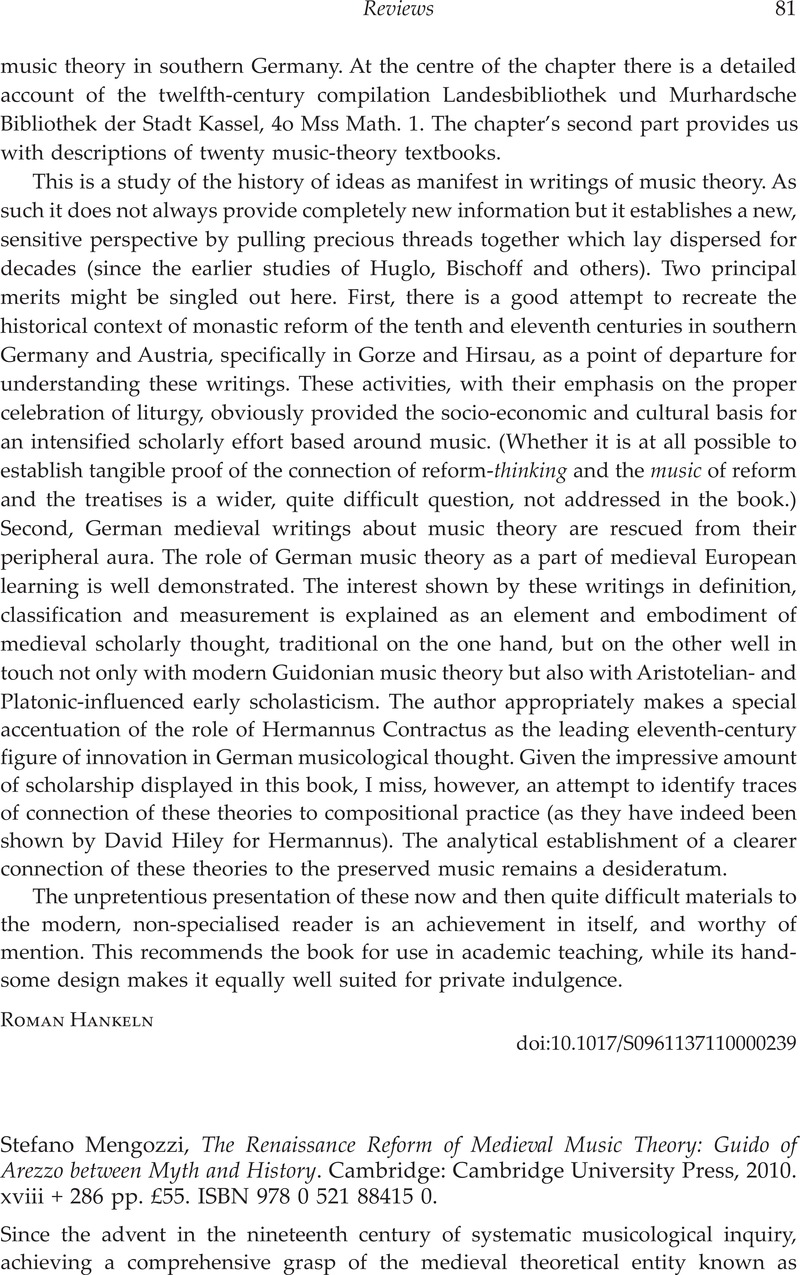No CrossRef data available.
Published online by Cambridge University Press: 18 March 2011

1 The Theory of Hexachords, Solmization and the Modal System, Musicological Studies and Documents 24 (Rome).
2 Hexachord, Mensur und Textstruktur, Beihefte zum Archiv für Musikwissenschaft 35 (Stuttgart).
3 Regarding Allaire's book, see the reviews of Hughes, Andrew and Planchart, Alejandro, contained respectively in Journal of the American Musicological Society 27 (1974), 132–139CrossRefGoogle Scholar , and Journal of Music Theory 18 (1974), 213–223CrossRefGoogle Scholar . Christian Berger's methods were taken to task by Sarah Fuller, who maintains that ‘Berger's account … is deeply flawed and in fact gravely misrepresents the medieval view he seeks to elucidate’; see ‘Modal Discourse and Fourteenth-Century Song: A “Medieval” Perspective Recovered?’ Early Music History 17 (1998), 61–108CrossRefGoogle Scholar (65).
4 Perhaps this omission is a consequence of the author's claim that ‘the English term “hexachord” is a poor translation for the medieval terms deductio and proprietas’ (p. 111).
5 In the Greater Perfect System, only the top two and the bottom two tetrachords are conjunct; the two middle tetrachords (meson and diezeugmenon) are disjunct (i.e., they have no pitch in common). Parenthetically, the term hexachordum synemmenon, which Mengozzi is addressing here, is perhaps less ‘illogical’ than he suggests; rather, it is associated with the presence of B flat within the soft hexachord, having its precedent in the synemmenon tetrachord of the Greek Lesser Perfect System (which was fitted conjunctly above the meson tetrachord). It was invoked by medieval theorists to justify B flat within the incipient gamut. See Dolores Pesce, The Affinities and Medieval Transposition (Bloomington, 1987), pp. 7, 29, 46, 58.
6 For example, Crocker, Richard L., ‘Hermann's Major Sixth’, Journal of the American Musicological Society 25 (1972), 19–37CrossRefGoogle Scholar .